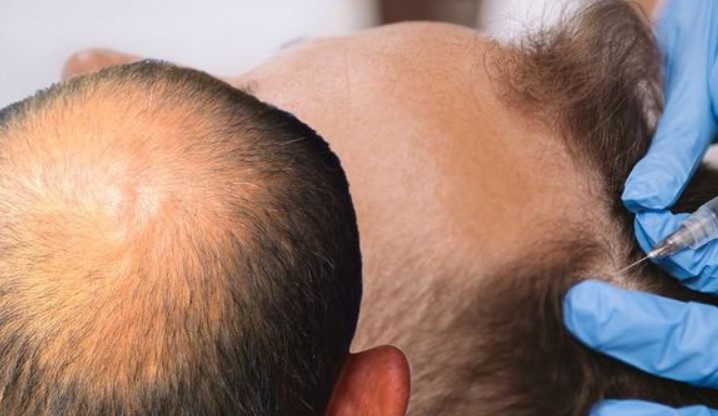Hair transplant procedures have come a long way over the past decades, continually evolving to offer more efficient, lasting, and natural-looking results. As an experienced hair specialist, I have witnessed firsthand the transformative potential of these surgeries. One aspect that often arises post-surgery is the integration of Platelet-Rich Plasma (PRP) therapy.
This article will delve into the benefits of hair transplant, the specifics of PRP therapy, and address some frequently asked questions.
What is a Hair Transplant?
A hair transplant is a surgical procedure that involves moving hair follicles from one part of the body (often referred to as the “donor site”) to the balding or thinning areas (the “recipient site”). The goal is to restore hair growth in areas where it is lacking, leading to a fuller and more youthful appearance.
The Evolution of Hair Transplant Techniques
In the early days, large plugs of hair were moved, often leading to an unnatural appearance. Modern techniques, however, allow for the transplantation of individual hair follicles, ensuring a much more natural result.
The two primary methods used today are:
- Follicular Unit Transplantation (FUT): A strip of scalp is removed from the donor site, and individual hair follicles are then harvested and implanted.
- Follicular Unit Extraction (FUE): Individual hair follicles are removed directly from the donor site and implanted in the recipient area.
Introduction to PRP Therapy
Platelet-rich plasma (PRP) therapy involves using a concentration of a patient’s own platelets to accelerate the healing of injured tendons, ligaments, muscles, and joints. In the realm of hair restoration, PRP is utilized for its potential to stimulate dormant hair follicles and promote hair growth.

PRP and Hair Transplants: The Perfect Duo?
Combining PRP therapy with hair transplant surgeries has become increasingly popular. Here’s why:
- Enhanced Recovery: PRP is rich in growth factors, which can expedite the healing process of the surgical sites.
- Improved Hair Growth: Some studies suggest that PRP can speed up hair growth post-transplant.
- Density and Thickness: PRP might thicken transplanted hair, leading to a fuller appearance.
PRP Before or After a Hair Transplant
PRP, which stands for Platelet-Rich Plasma, is a concentrated source of platelets derived from a person’s own blood. It’s rich in growth factors that can help stimulate hair growth, reduce inflammation, and accelerate wound healing. Given its potential benefits, PRP is frequently considered in the context of hair transplant procedures.
Both before and after applications have their merits, and the decision largely depends on the goals and recommendations of the hair transplant surgeon. Let’s examine the pros and cons of both approaches:
PRP Before Hair Transplant
Advantages:
- Preparation of the Scalp: PRP can increase blood supply to the hair follicles, potentially making the scalp more conducive to accepting the transplants.
- Stimulation of Dormant Hair Follicles: The growth factors in PRP may stimulate non-active or weak hair follicles in the recipient area, enhancing the overall density after the transplant.
Disadvantages:
- Potential Waste: If the patient’s hair loss isn’t stabilized (i.e., they’re still losing hair), then PRP might be less effective as ongoing hair loss could counteract the benefits.
PRP After Hair Transplant
Advantages:
- Enhanced Recovery: The growth factors in PRP can expedite the healing process of the surgical sites, reduce inflammation, and minimize scarring.
- Improved Hair Growth: Applying PRP post-transplant might encourage faster growth of the transplanted hair.
- Survival Rate of Grafts: PRP can potentially increase the survival rate of the transplanted grafts by providing essential growth factors.
Disadvantages:
- Additional Discomfort: Given that the scalp is already tender from surgery, some patients might find post-operative PRP treatments to be uncomfortable.
PRP After Hair Transplant Cost
The cost of PRP treatment can vary widely based on several factors:
- Geographic Location: In areas with a higher cost of living or where there are few providers, PRP treatments may be more expensive.
- Clinic Reputation and Expertise: High-end clinics or those with renowned experts might charge more for their services.
- Number of Sessions: The total cost will depend on how many PRP sessions are recommended.
- Inclusions: Some clinics offer comprehensive packages that include consultation fees, the PRP treatment itself, and any follow-up sessions or care.
On average, a single PRP session can range from 100000 to 2,50000 or more. It’s crucial to ask clinics for detailed pricing information and what’s included in the cost.
Is it Necessary to Take PRP After Hair Transplant?
While PRP therapy has shown promising results in enhancing the outcomes of hair transplants, it isn’t universally deemed “necessary.” The decision to incorporate PRP treatments should be based on:
- Patient Needs: Some patients might benefit more from PRP, especially if they have more extensive areas of thinning or are looking for accelerated healing.
- Surgeon’s Recommendation: Some surgeons firmly believe in the benefits of PRP and might recommend it as a standard part of the recovery process, while others might suggest it on a case-by-case basis.
- Budget Considerations: As PRP adds to the overall cost, patients should weigh its potential benefits against their budget.
How Often Should You Do PRP After Hair Transplant?
The frequency of PRP sessions post-hair transplant can vary based on the patient’s needs and the surgeon’s recommendations. However, a general guideline is:
- Initial Phase: 2-3 sessions spaced about 4-6 weeks apart. This frequent initial treatment can maximize the healing and stimulating benefits of PRP.
- Maintenance Phase: Once the initial sessions are completed, maintenance treatments might be suggested every 6-12 months.
Again, the exact frequency can vary. Some patients might see sustained benefits with fewer sessions, while others might benefit from more frequent treatments.
In conclusion, PRP therapy can be a valuable adjunct to hair transplant surgery, potentially enhancing graft survival, speeding up recovery, and promoting hair growth. However, decisions about its use, frequency, and associated costs should be made in consultation with a trusted hair restoration specialist.
FAQs about PRP and Hair Transplants
-
Is it good to have PRP after a hair transplant?
Yes, PRP therapy after a hair transplant can be beneficial. It can accelerate the healing process, reduce inflammation, and potentially enhance the overall results of the transplant.
-
Does PRP speed up hair growth after a hair transplant?
While individual experiences may vary, PRP therapy has been shown in some cases to expedite hair growth post-transplant due to the high concentration of growth factors.
-
Does PRP thicken transplanted hair?
There’s evidence to suggest that PRP therapy can enhance the density and thickness of transplanted hair. The platelets and growth factors in PRP may stimulate hair follicles, leading to thicker and more robust hair growth.
-
How many PRP sessions are needed for a hair transplant?
The number of PRP sessions varies from patient to patient. Typically, a series of 2-3 sessions spaced 4-6 weeks apart is recommended initially, followed by maintenance sessions every 6-12 months.
Conclusion
Hair transplant surgeries offer a promising solution to hair loss. When combined with PRP therapy, the potential benefits increase, offering patients enhanced results and a quicker recovery. It’s essential to consult with a knowledgeable and experienced hair specialist to discuss individual needs and the best possible treatment options.

